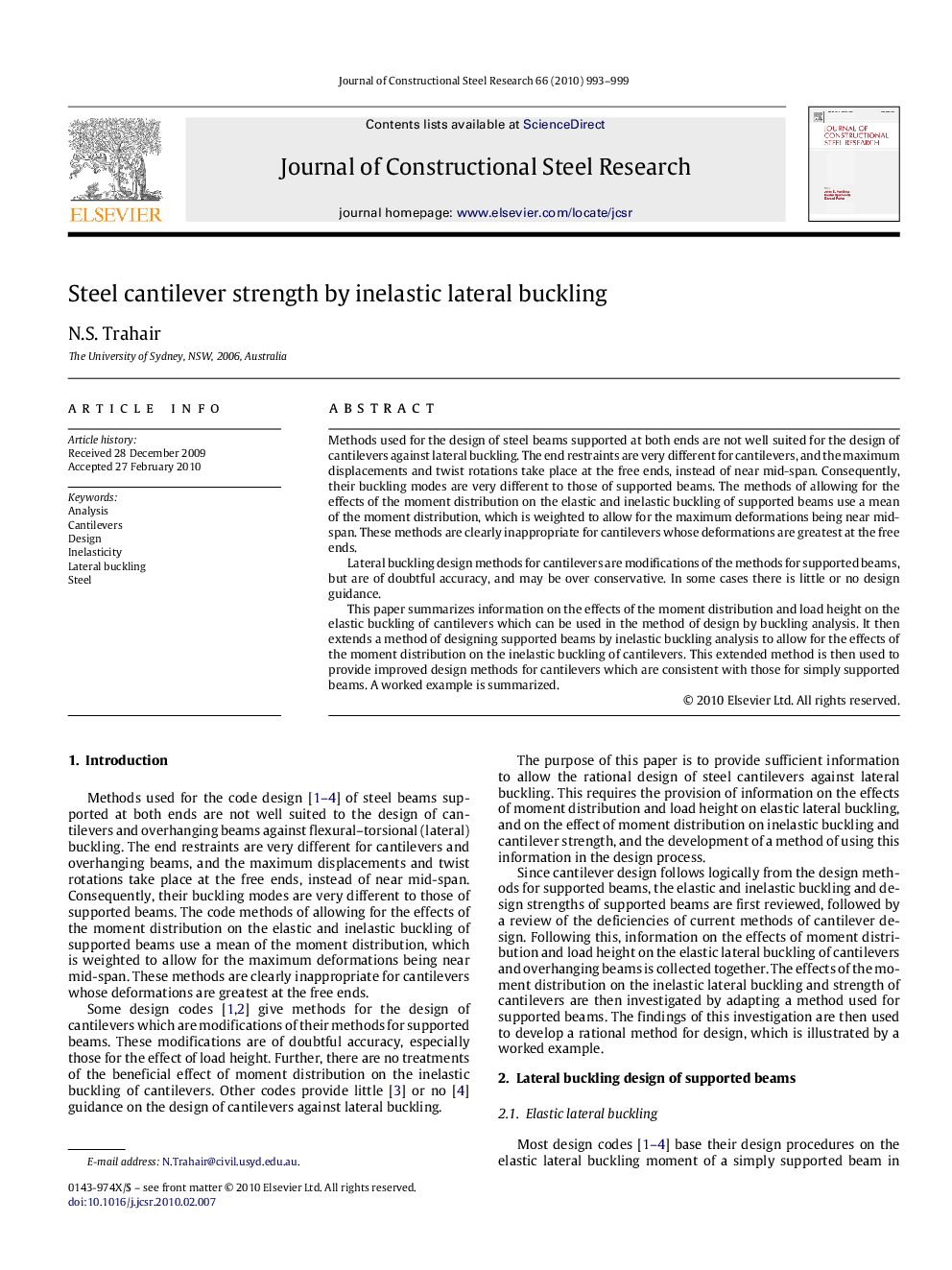| Article ID | Journal | Published Year | Pages | File Type |
|---|---|---|---|---|
| 285483 | Journal of Constructional Steel Research | 2010 | 7 Pages |
Methods used for the design of steel beams supported at both ends are not well suited for the design of cantilevers against lateral buckling. The end restraints are very different for cantilevers, and the maximum displacements and twist rotations take place at the free ends, instead of near mid-span. Consequently, their buckling modes are very different to those of supported beams. The methods of allowing for the effects of the moment distribution on the elastic and inelastic buckling of supported beams use a mean of the moment distribution, which is weighted to allow for the maximum deformations being near mid-span. These methods are clearly inappropriate for cantilevers whose deformations are greatest at the free ends.Lateral buckling design methods for cantilevers are modifications of the methods for supported beams, but are of doubtful accuracy, and may be over conservative. In some cases there is little or no design guidance.This paper summarizes information on the effects of the moment distribution and load height on the elastic buckling of cantilevers which can be used in the method of design by buckling analysis. It then extends a method of designing supported beams by inelastic buckling analysis to allow for the effects of the moment distribution on the inelastic buckling of cantilevers. This extended method is then used to provide improved design methods for cantilevers which are consistent with those for simply supported beams. A worked example is summarized.
